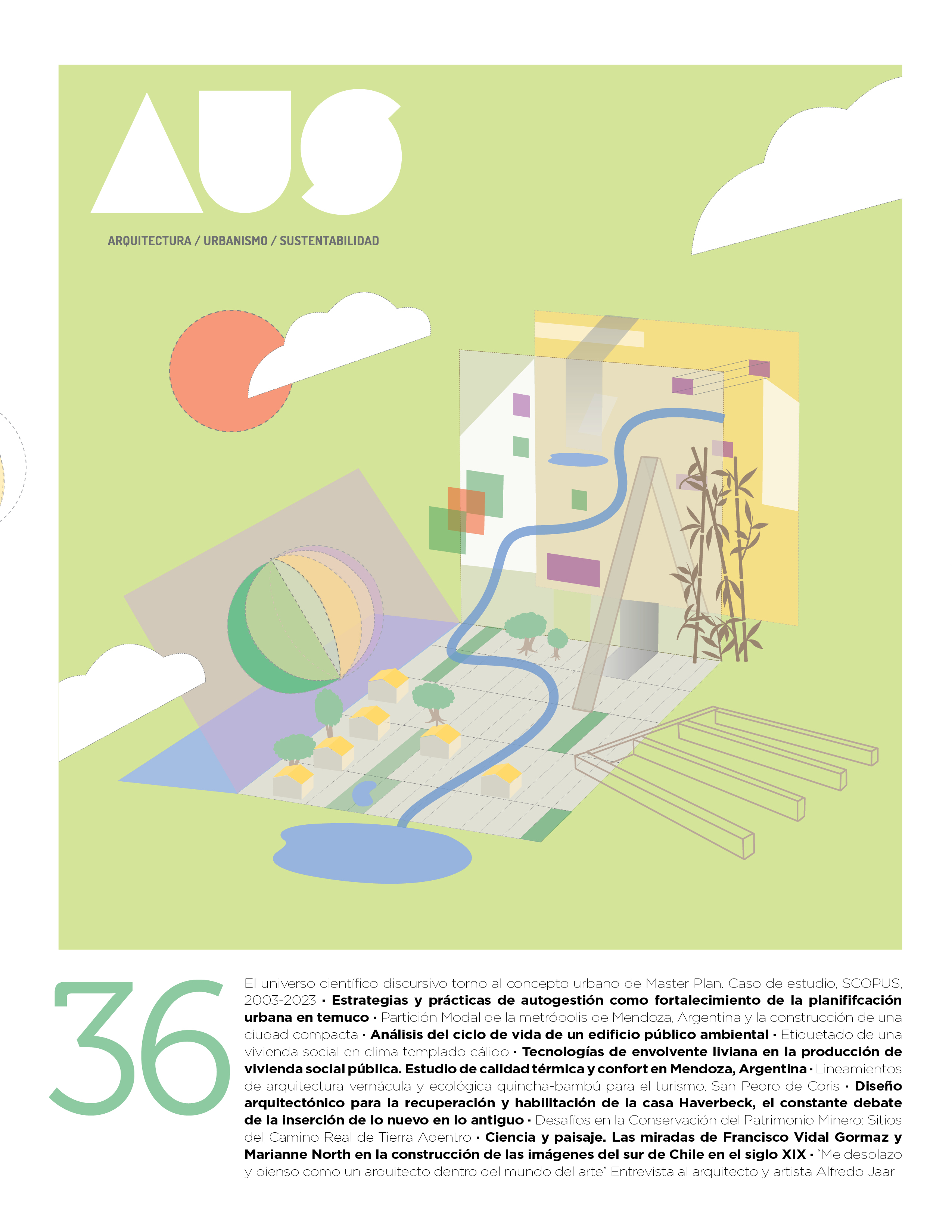Challenges in the Conservation of Mining Heritage: Sites of the Camino Real de Tierra Adentro
Conteúdo do artigo principal
Resumo
This research contributes to the study of industrial mining heritage, its relevance, vulnerability, and the challenges for its conservation and enhancement, taking as a context the ancient royal mine towns of the Royal Road of the Interior Land. This cultural thoroughfare was recognized by UNESCO and is originated in the discovery and exploitation of rich mineral deposits. Mining heritage sites have been identified through historical-documentary research and an analysis of their assessment by local communities, through surveys and interviews. Additionally, the technical and legal instruments that recommend dismantling these structures –ignoring their social and cultural dimension– as part of environmental regulations were reviewed. The study exposes the unsustainable situation affecting this heritage, despite its potential to be revitalized through adaptive reuse and to contribute to the inclusive development of communities impacted by natural resource depletion.
Detalhes do artigo

Este trabalho está licenciado sob uma licença Creative Commons Attribution-NonCommercial-NoDerivatives 4.0 International License.
Referências
Alberruche del Campo, E. (2012). Guía metodológica para la integración del patrimonio minero en la evaluación de impacto ambiental. Ministerio de Agricultura, Alimentación y Medio Ambiente.
Bargellini, C. (1991). La Arquitectura de la Plata: Iglesias monumentales del centro-norte de México 1640-1750 (Instituto de investigaciones estéticas - UNAM & TURNER, Eds.). Turner.
De Los Reyes, A. (1991). Los caminos de la plata. Universidad Iberoamericana.
Douet, J. (2012). INDUSTRIAL Heritage Re-tooled. : The TICCIH Guide to Industrial Heritage Conservation. Carnegie House. https://doi.org/10.4324/9781315426532
Finucane, S. J., & Tarnowy, K. (2019). New uses for old infrastructure: 101 things to do with the “stuff” next to the hole in the ground. Proceedings of the International Conference on Mine Closure, 2019-September, 479-495. https://doi.org/10.36487/ACG_rep/1915_40_Finucane
Harrison, R. (2015). Beyond “natural” and “cultural” heritage: Toward an ontological politics of heritage in the age of anthropocene. Heritage and Society, 8(1): 24-42. https://doi.org/10.1179/2159032X15Z.00000000036
Liu, F., Zhao, Q., & Yang, Y. (2018). An approach to assess the value of industrial heritage based on Dempster–Shafer theory. Journal of Cultural Heritage, 32, 210-220. https://doi.org/10.1016/j.culher.2018.01.011
Loures, L. (2008). Industrial Heritage: the past in the future of the city. https://www.researchgate.net/publication/239823904
MIsIrlIsoy, D. & Günçe, K. (2016). Adaptive reuse strategies for heritage buildings: A holistic approach. Sustainable Cities and Society, 26, 91-98. https://doi.org/10.1016/j.scs.2016.05.017
Morales, A. L., & Domas, M. H. (2020). Guía metodológica de cierre de minas Documentos de proyectos. (LC/TS.2020/166), Comisión Económica para América Latina y el Caribe (CEPAL). https://repositorio.cepal.org/server/api/core/bitstreams/766a85c7-5ac4-4cd4-874a-f06c6c2060c6/content
Plevoets, B., & Van Cleempoel, K. (219 C.E.). Adaptive reuse of the built heritage: concepts and cases of an emerging discipline. In Built Heritage (Issue 1). Routledge, Taylor Francis Group. https://doi.org/https://doi.org/10.4324/9781315161440
Powell, P. W., & Utrilla, J. J. (1984). La guerra chichimeca (1550-1600). In México, (Ed.), Lecturas mexicanas. Fondo de Cultura Económica, SEP. Subsecretaria de cultura.
Silva Ontiveros, L. (2021). Y después de la mina ¿qué? Hacia una política de cierre de minas. Fundación Heinrich Böll Ciudad de México. https://mx.boell.org/sites/default/files/2022-05/WEB_Politica_cierre_minas_HB_0.pdf
Sun, M., Li, Z., Huang, L., Sun, M., Li, Z., & Huang, L. (2019). Assessment of the Catalytic Effects of Transforming Industrial Heritage: Case Study of Sanbao Street Industrial Historic District in Changzhou. Built Heritage 3, 59-75. https://doi.org/10.1186/BF03545736
Vardopoulos, I. (2019). Critical sustainable development factors in the adaptive reuse of urban industrial buildings. A fuzzy DEMATEL approach. Sustainable Cities and Society, 50. https://doi.org/10.1016/j.scs.2019.101684
Varriale, R., Aldighieri, B., & Genovese, L. (2023). Dismissed Mines: From the Past to the Future. Heritage, 6(2): 2152-2185. https://doi.org/10.3390/heritage6020115
Vukmirović, M., & Nikolić, M. (2023). Industrial heritage preservation and the urban revitalisation process in Belgrade. Journal of Urban Affairs, 45(2): 191-216. https://doi.org/10.1080/07352166.2020.1851140
Yuan, Q., Song, H. J., Chen, N., & Shang, W. (2019). Roles of tourism involvement and place attachment in determining residents’ attitudes toward industrial heritage tourism in a resource-exhausted city in China. Sustainability (Switzerland), 11(19). https://doi.org/10.3390/su11195151

